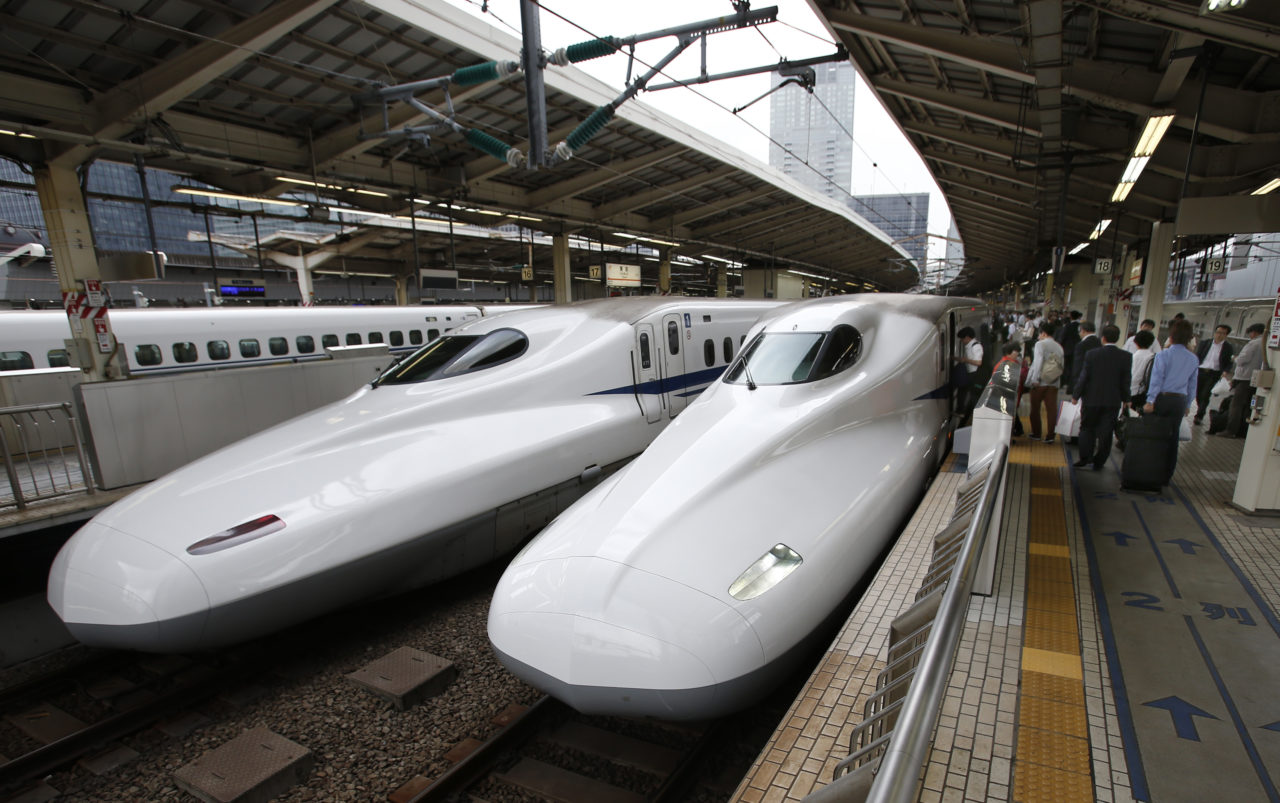
The trans-Vietnam high-speed rail is back on the agenda, with officials saying it can compete with aeroplanes for business.
Government officials are also confident that the current pace of economic development will make it practical to source funding for the multi-billion dollar project in phases.
The Ministry of Transport is working on a feasibility study for the high-speed railway project what would span 1,545 kilometers (960 miles) to connect Hanoi and Ho Chi Minh City.
The project is estimated to cost more than $58 billion, which was the reason lawmakers had shot it down several years ago, saying the nation could not afford it then.
It is currently envisaged that two sections of the route – from Hanoi to the north-central city of Vinh and from the south-central city of Nha Trang to HCMC – will be built first in 2020-2030 at a cost of $24 billion, and commercial operations are likely to begin in 2032.
Questions have been asked about the advisability of pursuing the high-speed rail project in the context of Vietnam still needing a lot of capital for infrastructure projects like expressways, the Long Thanh International Airport, which is set to become the country’s largest, as also expansion of the Tan Son Nhat Airport in HCMC.
This is countered with the argument that the high-speed railway has great advantages in a country with narrow and long terrain like Vietnam.
Nguyen Van Thanh, chairman of Vietnam Automobile Transportation Association (VATA), said that in the next 10-15 years when Vietnam’s population rises to more than 100 million, the demand for travel would be huge.
By then, the country will need more means of transportation, Thanh said, adding that he guessed many people would prefer the rail rather than roads on safety considerations.
Going further, Thanh compared the high-speed rail with flying.
“Many will choose the high-speed rail because the time for traveling would be almost the same, but unlike airports that mostly lie in suburban areas, rail stations are in the inner city, which makes it more convenient for passengers. Moreover, the procedures for flying are much more complicated.”
Transport expert Than Van Thanh had similar thoughts.
“Railways have been left behind for 70 years in Vietnam and the country has paid a lot of attention to developing roads; but it’s not safe to let bus drivers drive for more than 300 kilometers at a time.
“Road transport has high logistical costs and frequent accidents. A high-speed rail will ease the overload on the roads and thus reduce traffic accidents and environmental pollution. If we let too many long distance buses operate on the road, like we are doing now, we are going in the opposite direction from the world,” he said.
Tran Dinh Thien, a member of the Prime Minister’s advisory group, said the National Assembly used to turn down proposals on the high-speed rail because the investment was too high, but with the current speed of economic development, it was possible to raise fund for each phase of the project.
“The demand for travel between Hanoi and Vinh is high and with a designed traveling time of 1.5 hours, high-speed trains can compete with buses and airlines. It is not right to give priority to any specific sector,” he said.
According to a consultancy consortium comprising Vietnamese firms Transport Engineering Design Inc (TEDI), Transport Investment and Construction Consultant Joint Stock Company (TRICC) and Transport Engineering Design Incorporation in the South (TEDIS) that is hired by the government to do the feasibility study, the trans-Vietnam high-speed rail would adopt the distributed traction technology used by Japanese high-speed trains.
Sixty percent of the tracks will be on viaducts, 10 percent underground and 30 percent on the surface, completely protected by fencing and without a single crossing.
The entire project could be completed and operational by 2040-2045. The train ride from Hanoi to HCMC then would take eight hours, while the current one takes 24 hours.
Vietnam’s existing 3,000-kilometer railroad network has not received any major investment since it was built 140 years ago, and does not have the capacity for high speeds.
Investment in the railways currently accounts for just one percent of the transportation sector’s total budget.

